
Compare the DJI Mavic 3 Cine to the DJI Mavic 3
DJI Mavic 3 and Mavic 3 Cine no longer available
The DJI Mavic 3 and Mavic 3 Cine are no longer available. The DJI Mavic 3 Pro is the successor. This drone has an extra telephoto lens, which allows you to zoom in without losing quality. The Mavic 3 Pro is also available as a Cine version.
Comparison DJI Mavic 3 Cine and DJI Mavic 3
| DJI Mavic 3 Cine | DJI Mavic 3 | |
|---|---|---|
| Resolution | 5.1K 50 fps | 5.1K 50 fps |
| Internal memory | 1TB | 8GB |
| Apple ProRes | Yes | No |
| Maximum flight time | 46 minutes | 46 minutes |
| Maximum flight distance | 30km | 30km |
| Remote | DJI RC Pro | DJI RC-N1 |
| Speed | 75m/s | 75m/s |
| Weight | 900g | 900g |
Image quality
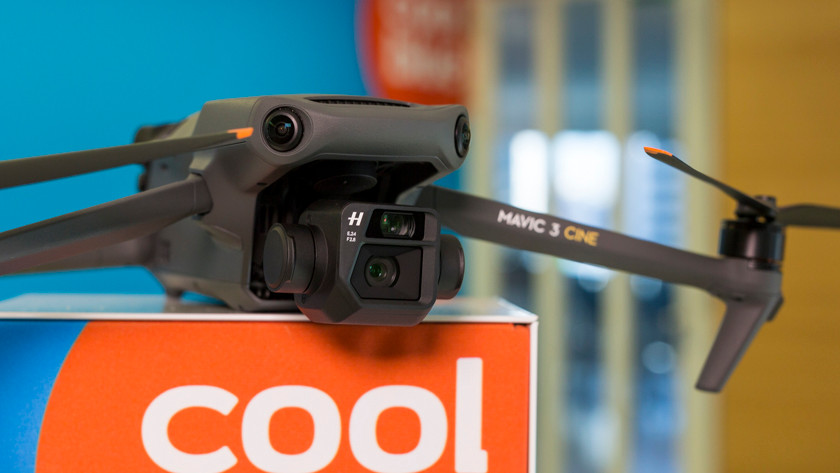
Mavic 3 Cine: 5.1K 50 fps
The DJI Mavic 3 Cine has 2 cameras. It as a wide-angle camera and a telephoto camera. The wide-angle camera of this drone is made by Hasselblad and the image angle is similar to that of a 24mm lens. This way, you can record broad landscapes. With this camera, you can record in 5,1K at 50 fps. Thanks to the 28x zoom of the telephoto camera, you can easily bring far-away objects closer. As a result, you can record in 4K resolution at 30 fps.
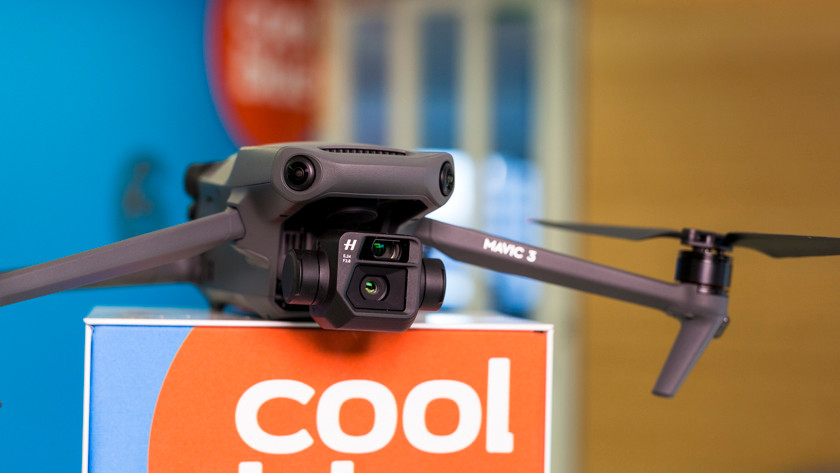
Mavic 3: 5.1K 50 fps
The camera of the Mavic 3 is the same as that of the Mavic 3 Cine. With this drone, you'll also have a camera with a wide image angle and a telephoto camera. With the Hasselblad camera, you can record in 5.1K at 50 fps. With the telephoto camera with 28x zoom, you can record in 4K at 30 fps. With both drones, you can adjust the aperture from f/2.8 to f/11. With an f/2.8, you can use faster shutter speeds, so your images are sharp.
Video processing and storage

DJI Mavic 3 Cine: Apple ProRes 422HQ and 1TB storage
With the Cine version, you record in the Apple ProRes 422 HQ file format. In this professional file format, the drone stores a lot of information, so you can make edits more easily afterwards. This can be the lighting or color of the video material. The drone has a fast 1TB SSD drive, so it easily writes the large video files.
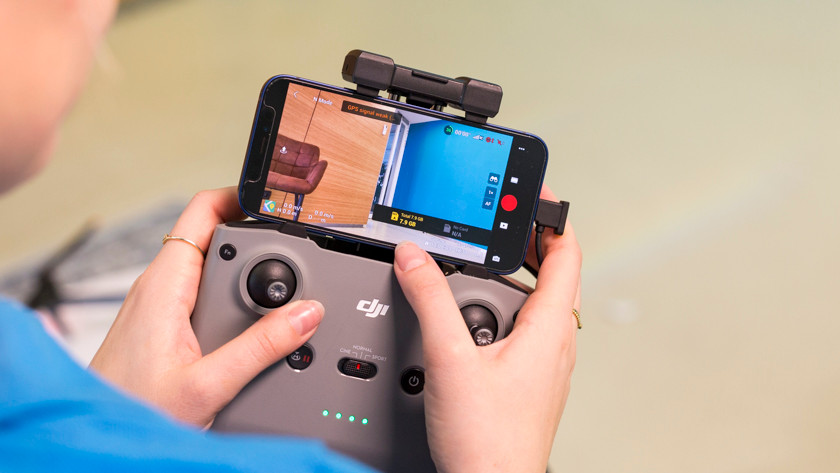
DJI Mavic 3: H.264 and 8GB storage
With the Mavic 3, you can't record in Apple ProRes. You'll record in the H.264 format. This format compresses the video footage more, so you'll get a smaller file size. As a result, you'll save less information. This way, you can't edit the color as easily, for example. This drone has a 8GB internal memory. You can expand this with a micro SD card.
Control
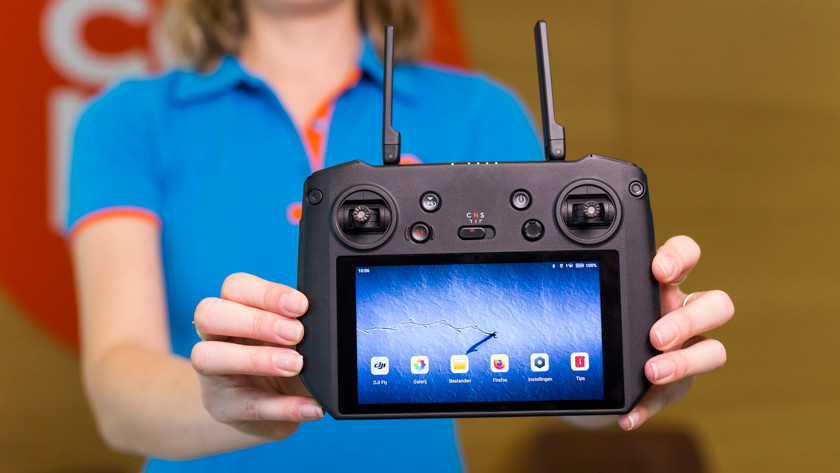
DJI Mavic 3 Cine: DJI RC Pro
This drone is suitable for professional videographers. That's why you'll receive the DJI RC Pro, which is a professional remote. The remote has a 5-inch display, so you can see the details of what you record, without using your phone. The remote uses O3+ video transmission technology. In combination with the 4G network connection, you'll have a stable connection and fast communication with your drone. You can download various apps on the remote, which allows you to stream live footage to social media, for example.
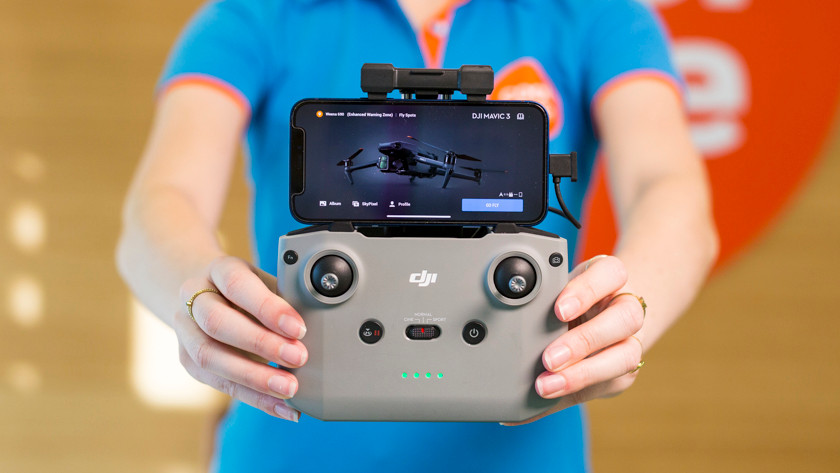
DJI Mavic 3: DJI RC-N1
The Mavic 3 comes with the standard DJI RC-N1 remote. You can use this in combination with your smartphone. Click your phone into the holder and connect it with a USB cable. This way, you'll see the video footage of your drone on the screen of your phone. The downside is that the screen isn't bright enough during sunny days, and you drain the battery of your smartphone faster. This controller has OcuSync 2, which is less stable than the O3+ video transmission technology of the DJI RC Pro.
Conclusion
The Mavic 3 Cine and DJI Mavic 3 look a lot alike, but they really differ in terms of video processing. The Mavic 3 Cine is the most elaborate version and it appeals to professional videographers. This drone supports recordings in the Apple ProRes 422 HQ format. This way, you'll have more options if you edit afterwards. Think of editing the colors or lighting. Don't you need that? The Mavic 3 is a nice alternative.


